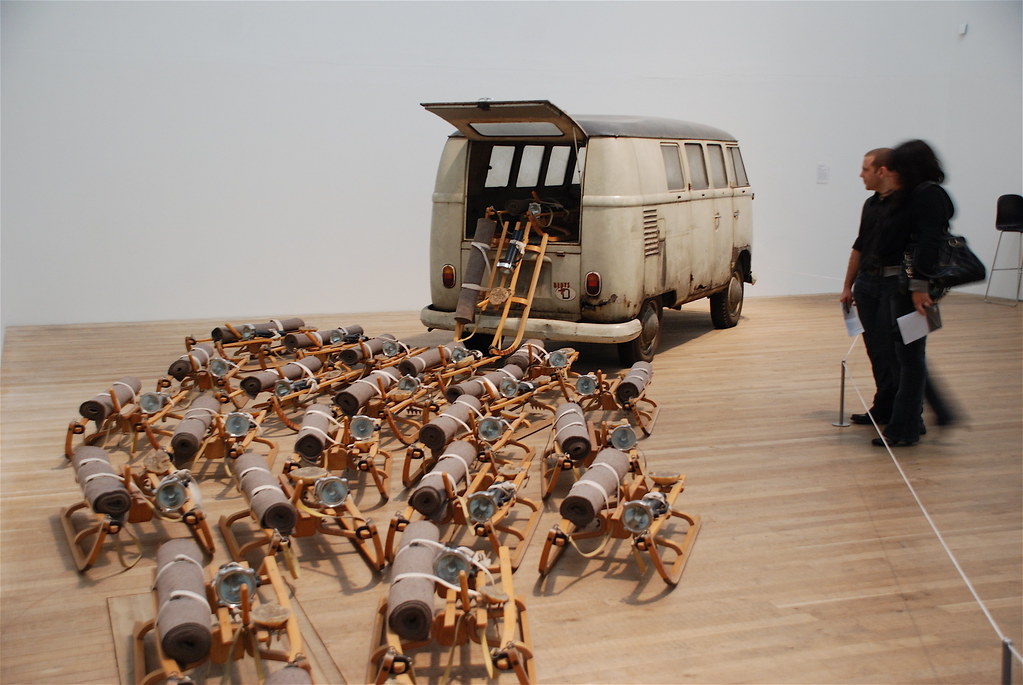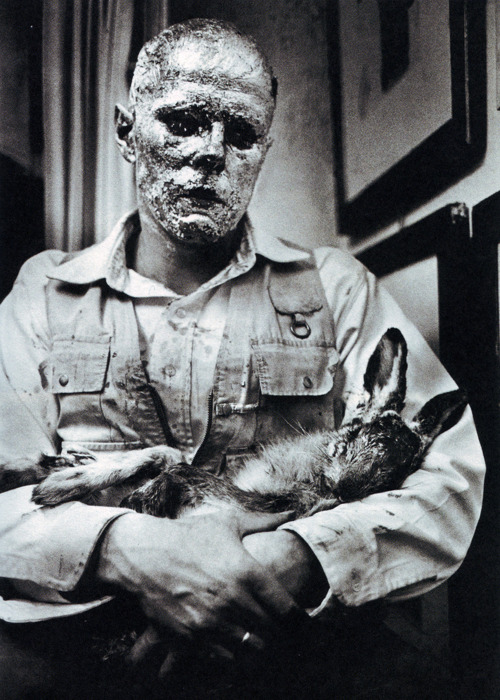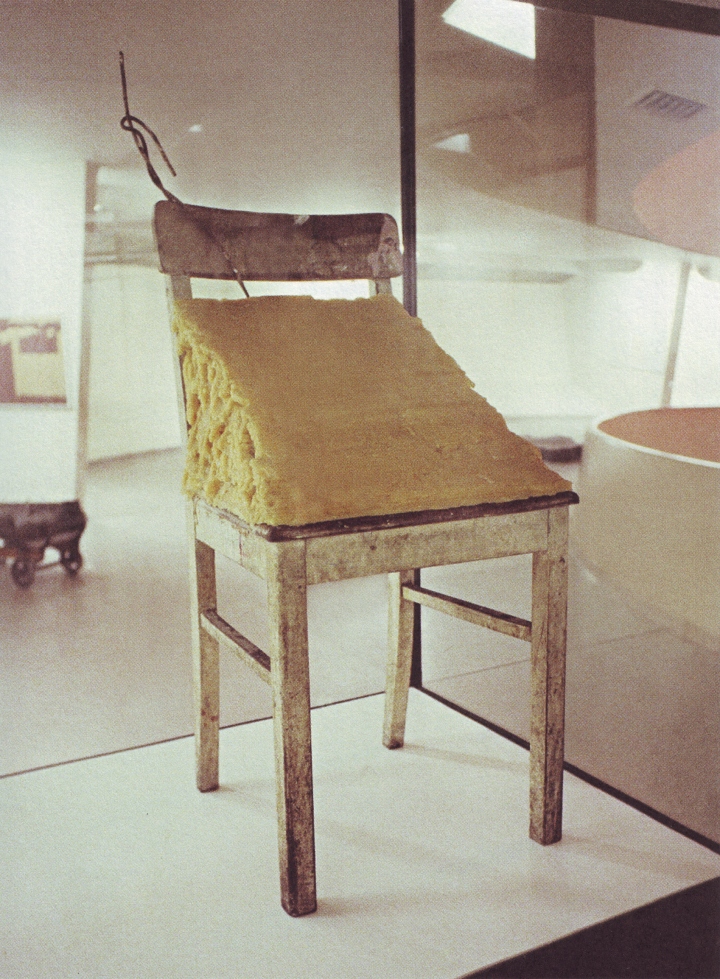Joseph Beuys was an artist born in Northwest Germany in 1921 and associated with the Fluxus movement of the 1960's. In 1941 at age 20, Beuys joined the German Air Force and in 1944 his plane was shot down by Russian forces over the Crimean Front in Ukraine. This incident in his life became a pivotal moment not only personally but artistically as well. He fashioned a myth around his recovery from his plane crash stating that he was nursed back to health by a nomadic tribe of Tartars who lathered his body in animal fat and wrapped him in felt to keep him warm. The story is a fantasy but the incident became a turning point where he would later devote his life to art. The use of fat and felt as materials in his works is symbolically important as healing aids for humanity.
 |
| The Pack (1969) |
 |
| I Like America and America Likes Me (1974) |
Beuys thought of society as a "giant social sculpture" and that everyone is an artist participating in the shaping of that sculpture. His works primarily deal with the interrelationships between humanity and nature on a physical and spiritual level. Probably the most well known work by Beuys is the performance piece,
How to Explain Pictures to a Dead Hare. Beuys, with his head covered in honey and gold leaf, talked to a dead hare about pictures on the wall that he had drawn all the while keeping the audience locked out of the gallery for the duration of his discussion with the hare. All the materials used in the performance were symbolically powerful as well as practically important materials.
 |
| How to Explain Pictures to a Dead Hare (1965) |
A few quotes by Beuys I came across that I found particularly intriguing are these:
"Environmental pollution advances parallel with the pollution of the world within us [...] It is no longer regarded as romantic but exceedingly realistic to fight for every tree, every plot of undeveloped land, every stream as yet un-poisoned, every old town centre and against every thoughtless reconstruction scheme."
"I believe that a human being is fundamentally a spiritual being, and that our vision of the world must be extended to encompass all the invisible energies with which we have lost contact or from which we have been alienated"
"If the theory behind the actual work (of art) were the actual work (of art), then I wouldn't have to make something which was to be perceived through the sense organs"
 |
| Fat Chair (1964-1985) |
 |
| Fat Chair (1964-1985) |
 |
| 7000 Oaks: City Forestation instead of City Administration (1982-1987) |
 |
| Trees from 7000 Oaks next to basalt pillars they were planted with |
Sources:







No comments:
Post a Comment